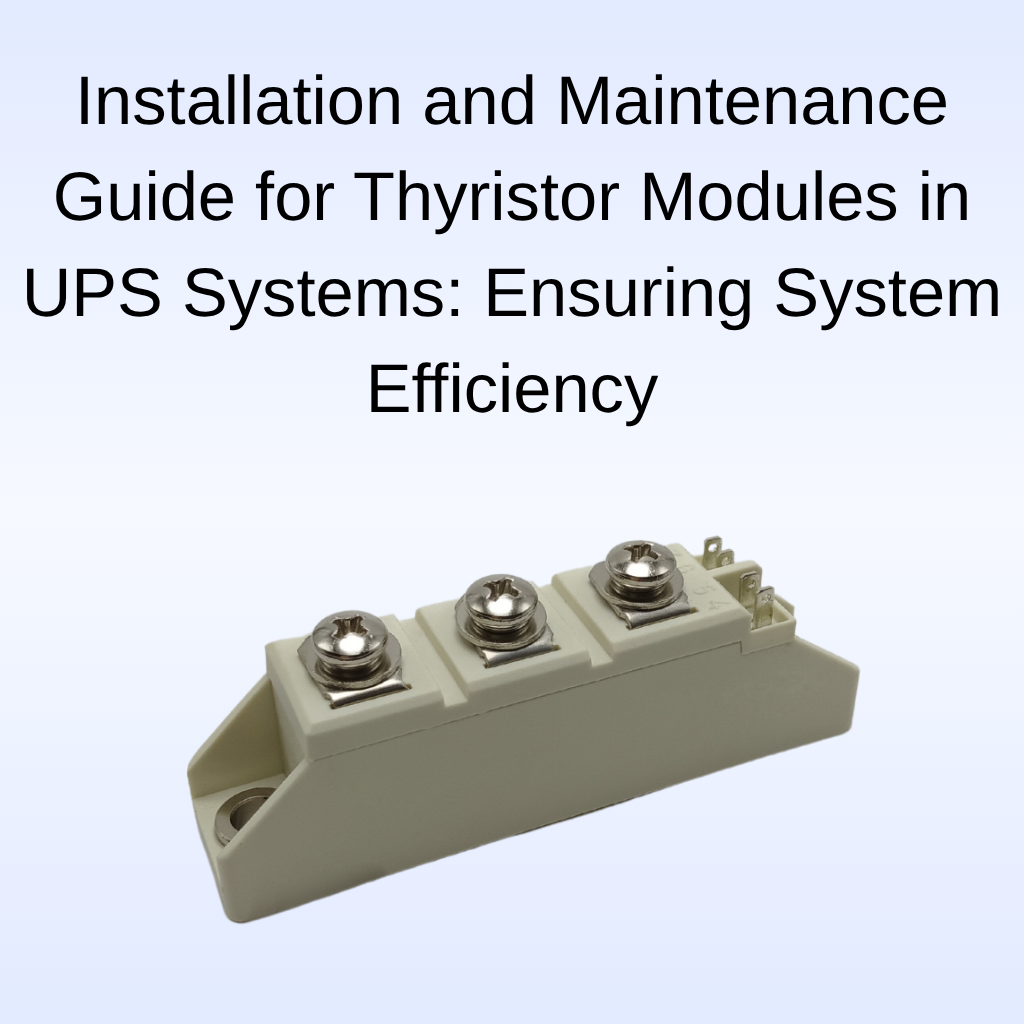Installation and Maintenance Guide for Thyristor Modules in UPS Systems: Ensuring System Efficiency
Thyristor modules are crucial components in Uninterruptible Power Supply (UPS) systems, ensuring efficient power conversion and providing protection for critical equipment. Proper installation and maintenance of these modules are vital for maintaining the reliability and longevity of the UPS system. This guide discusses the installation and maintenance of the dual-SCR series-connected compact 106A thyristor module for UPS systems, the 7-terminal light-dimming DC-motor-control 106A thyristor module for UPS systems, and the replacement industrial heating high-reliability 106A thyristor module for UPS systems.
Step 1: Installation of Thyristor Modules
Dual-SCR Series-Connected Compact 106A Thyristor Module: The dual-SCR series-connected compact 106A thyristor module for UPS systems is designed for space efficiency and high performance. Ensure that the module is correctly connected to the power converter circuit to facilitate smooth DC to AC conversion. Position the module in a well-ventilated area to prevent overheating, as adequate airflow is essential for maintaining optimal performance.
7-Terminal Light-Dimming DC-Motor-Control Thyristor Module: For applications requiring precise control over motor speeds or dimming light, the 7-terminal light-dimming DC-motor-control 106A thyristor module for UPS systems is ideal. During installation, make sure the wiring follows the manufacturer’s recommendations to ensure proper functionality. The 7-terminal configuration should be securely connected to avoid operational issues.
Replacement Industrial Heating High-Reliability Thyristor Module: The replacement industrial heating high-reliability 106A thyristor module for UPS systems is often used in industrial settings where durability and longevity are required. It’s essential to verify that the correct replacement module is used for your specific system to maintain the integrity of the UPS. Be sure to follow the specific guidelines for handling, as the module’s high-reliability features are designed to handle high loads and harsh environments.
Handling High Surge Current: All these modules should be able to handle high surge current effectively. Proper installation of thyristor modules will ensure that the UPS system is equipped to manage sudden power surges, protecting sensitive equipment from damage during power fluctuations.
Step 2: Testing After Installation
Low On-State Voltage Testing: Test the modules for low on-state voltage to ensure they are operating within the ideal voltage range. A lower on-state voltage helps minimize power loss and maximizes the overall efficiency of the UPS system.
Surge Current Handling: Test the modules’ ability to handle high surge current conditions. Ensure that the modules are absorbing the surge currents without affecting the performance of the system.
Motor Control Testing: For systems with the 7-terminal light-dimming DC-motor-control 106A thyristor module, verify that the motor control functionality is working correctly. The module should allow for precise control of motor speed and dimming without any irregularities.
Step 3: Maintenance of Thyristor Modules
Routine Inspections: Regularly inspect thyristor modules for signs of wear, corrosion, or damage. Look for signs of overheating, particularly around the dual-SCR series-connected compact 106A thyristor module for UPS systems, as overheating can lead to module failure.
Cleaning and Dust Removal: Dust and debris can accumulate on thyristor modules, reducing their efficiency. Regularly clean the modules using compressed air or a soft brush to prevent dust buildup and ensure proper airflow.
Thermal Management: Since thyristor modules can generate significant heat during operation, ensure that the cooling systems (fans, heat sinks) are functioning properly. Poor thermal management can cause modules to overheat, leading to premature failure.
Replacement of Worn Modules: Over time, thyristor modules may wear out, especially in high-demand environments. Ensure that you have replacement industrial heating high-reliability 106A thyristor module for UPS systems available to maintain system performance.
Conclusion
The proper installation and maintenance of thyristor modules in UPS systems are critical to ensuring their long-term reliability and efficiency. By following the recommended practices for installation, conducting thorough testing, and performing regular maintenance, you can optimize the performance of your UPS system. Key modules such as the dual-SCR series-connected compact 106A thyristor module for UPS systems, 7-terminal light-dimming DC-motor-control 106A thyristor module for UPS systems, and replacement industrial heating high-reliability 106A thyristor module for UPS systems play a vital role in ensuring that your UPS system operates smoothly and efficiently under various conditions.
READ MORE:

